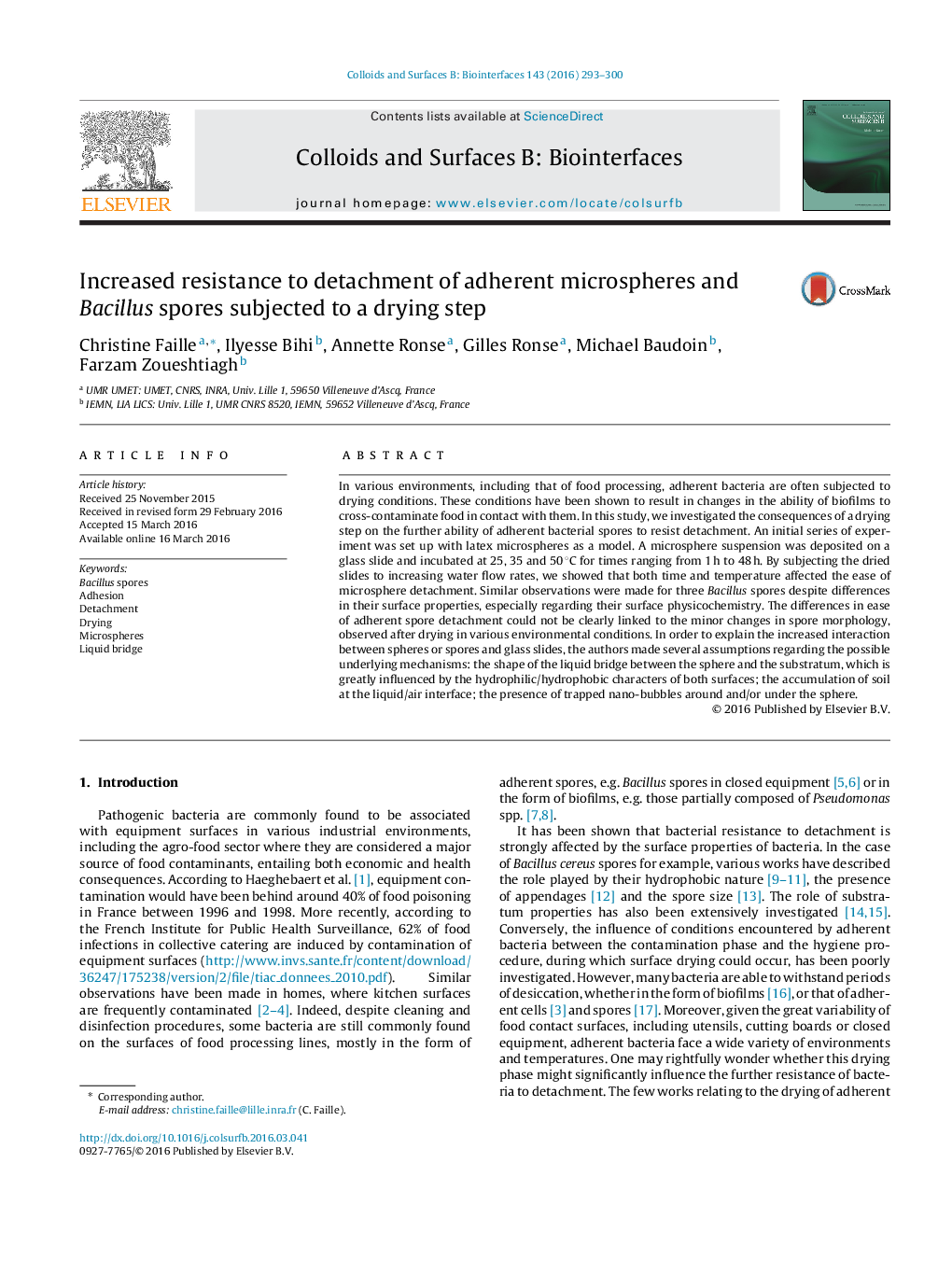| کد مقاله | کد نشریه | سال انتشار | مقاله انگلیسی | نسخه تمام متن |
|---|---|---|---|---|
| 599050 | 1454261 | 2016 | 8 صفحه PDF | دانلود رایگان |
• Drying can increase the resistance of adherent microspheres/spores to detachment.
• The shape of the liquid bridge between surfaces in contact depend on hydrophobicity.
• Surface properties of Bacillus spores are poorly affected by drying conditions.
• Equipment surfaces where drying occurs should be a concern in the food industry.
In various environments, including that of food processing, adherent bacteria are often subjected to drying conditions. These conditions have been shown to result in changes in the ability of biofilms to cross-contaminate food in contact with them. In this study, we investigated the consequences of a drying step on the further ability of adherent bacterial spores to resist detachment. An initial series of experiment was set up with latex microspheres as a model. A microsphere suspension was deposited on a glass slide and incubated at 25, 35 and 50 °C for times ranging from 1 h to 48 h. By subjecting the dried slides to increasing water flow rates, we showed that both time and temperature affected the ease of microsphere detachment. Similar observations were made for three Bacillus spores despite differences in their surface properties, especially regarding their surface physicochemistry. The differences in ease of adherent spore detachment could not be clearly linked to the minor changes in spore morphology, observed after drying in various environmental conditions. In order to explain the increased interaction between spheres or spores and glass slides, the authors made several assumptions regarding the possible underlying mechanisms: the shape of the liquid bridge between the sphere and the substratum, which is greatly influenced by the hydrophilic/hydrophobic characters of both surfaces; the accumulation of soil at the liquid/air interface; the presence of trapped nano-bubbles around and/or under the sphere.
Figure optionsDownload as PowerPoint slide
Journal: Colloids and Surfaces B: Biointerfaces - Volume 143, 1 July 2016, Pages 293–300
